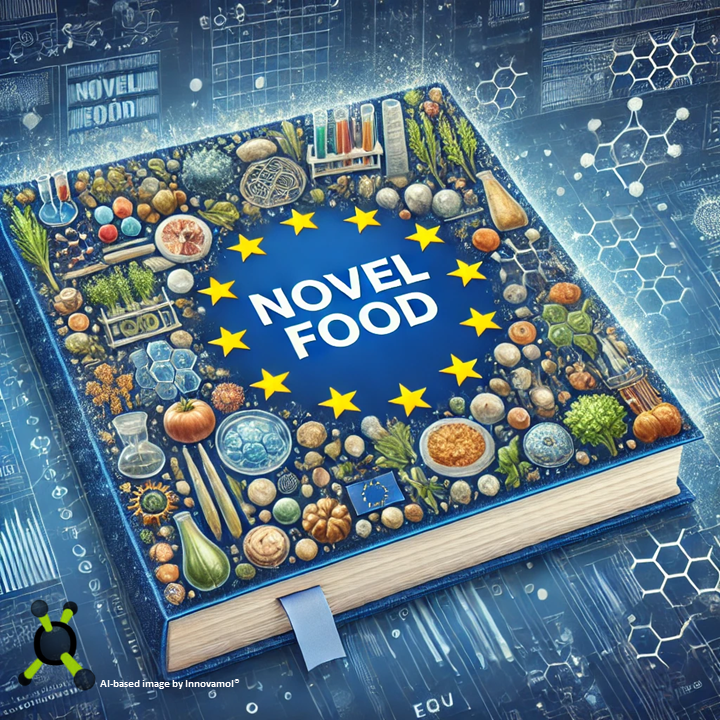The landscape of food innovation in the European Union is evolving rapidly, and the European Food Safety Authority (EFSA) is ensuring that its regulatory framework keep staying up to date. Recently, EFSA has been tasked by the European Commission (EC) to update its guidance on how to prepare and submit applications for novel foods. These changes will come into effect in February 2025 and will significantly impact both the scientific and administrative aspects of the novel food application process. For the stakeholders in the novel food industry, these updates are crucial to understand as they reshape the pathway to enter the market in the EU.
Novel foods are defined as foods that had not been widely consumed in the EU before May 15, 1997. These could be new ingredients, foods produced with new technologies, or new foods sourced from regions outside of EU. With rapid advances in food science and technology, the variety of novel foods seeking market authorisation is growing, making it essential that the safety assessment processes remain robust and up to date. EFSA’s latest update to the guidance on novel food applications reflects recent advances in food science and aims to fill knowledge gaps identified since the 2018 introduction of the Novel Foods Regulation (EU) 2015/2283. These improvements are designed to make applications clearer and more streamlined, potentially reducing the risk of delays due to missing or incomplete data.
The updated Guidance on the Scientific Requirements for an Application for Authorisation of a Novel Food in the Context of Regulation (EU) 2015/2283 provides detailed information on the scientific data that applicants must submit. It covers:
- the description of the novel food
- the production process
- compositional data
- specifications
- proposed uses
- safety data, including toxicology, nutritional information, potential allergens
- food’s history of use
One of the key changes is the clarification of definitions and data requirements, which should result in higher-quality applications and more efficient assessments. In addition, as expected, the guidance also emphasizes that a comprehensive literature review of studies reporting on relevant safety outcomes should be performed. In practical terms, applicants need to provide detailed information on the search strategy, including the sources used to retrieve pertinent data (e.g., databases, other sources), as well as the terms and limits used (e.g., publication dates, types, languages, population). It is interesting to see that the guideline specifies “where applicable, to use systematic approaches” leaving room for other approaches, such as Scoping Review, thus allowing applicants to save time and resources while still ensuring a thorough evaluation.
Additionally, EFSA’s updated Guidance on the Scientific Requirements for a Notification and Application for Authorisation of Traditional Foods from Third Countries in the Context of Regulation (EU) 2015/2283 integrates extensive data on the safety, composition, and history of traditional foods from third countries. For foods with a history of use outside the EU, in fact, applicants must now provide comprehensive evidence of continued safe consumption under the proposed EU market conditions. In simple terms, if a food is considered traditional and there are sufficient data to support its safety, applicants can proceed with a notification. However, if EFSA or a Member State submit to the Commission duly reasoned safety objections to market entry as traditional food, the applicant may submit a full application following the novel food guidelines mentioned above. This highlights the importance of a robust collection of scientific data to support the status of a food as ‘traditional’.
Another critical update is in the Guidance on Scientific Principles and Data Requirements for the Safety and Relative Bioavailability Assessment of New Micronutrient Sources. This guidance provides a detailed framework for assessing both the safety and bioavailability of micronutrients. It ensures that new micronutrient forms entering the market are safe, effective, and meet the needs of modern consumers. The aim here is to improve nutritional outcomes while maintaining rigorous safety standards.
For companies involved in the research and development of novel food products, these updates to the EFSA guidance present both challenges and opportunities. On the one hand, the new guidelines mean that more time will need to be invested in preparing applications, ensuring that every piece of data, from production processes to toxicological assessments, is comprehensive and scientifically robust. On the other hand, the clarity provided by the updated guidance make the application process smoother, reducing the likelihood of delays and improving chances of getting products to market faster. Another fundamental point stressed by the updated guidance is the need and the importance of reducing animal testing, aligning with the commitment to ethical research practices. This is supported by thorough scientific data collection and analysis, which ensures that the required safety evidence can be obtained through alternative means whenever possible.
We will continue to monitor these updates closely, and we encourage our partners and collaborators to do the same. Whether through workshops, conferences, or direct engagement with EFSA’s ongoing consultations, staying informed is the best way to navigate straightly news and regulations on novel foods.

By the way: Don’t miss out the change to join us at the Regulating the Future of Food Conference, part of the Future of Protein Production Conference on October 23rd-24th at RAI Amsterdam! We will lead a workshop titled “EFSA-Compliant Literature Reviews: Challenges, Pitfalls, and Opportunities”, where we’ll explore all these critical aspects! See you there!
“科学技术是第一生产力。” (Science and technology are the primary productive forces) – Deng Xiaoping

